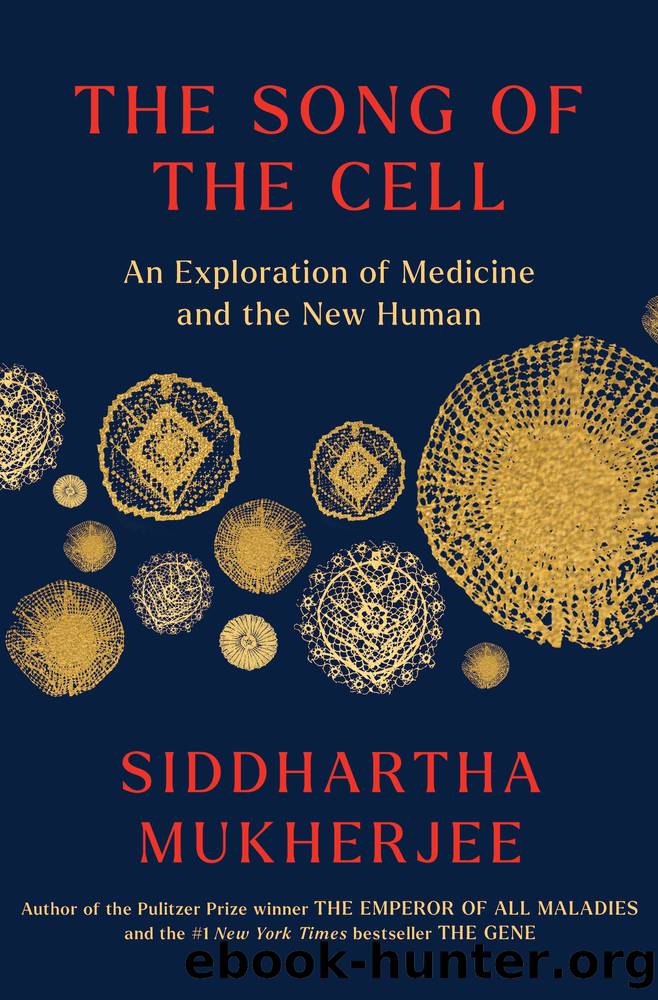The Song of the Cell by Siddhartha Mukherjee;

Author:Siddhartha Mukherjee;
Language: eng
Format: epub
Publisher: Simon & Schuster
Published: 2022-10-25T00:00:00+00:00
* * *
I finished this part of the book, coincidentally, on a Monday morning, the day I reserve to look at blood. I left the office where I usually write and walked down the corridor to the microscope room. Empty and silent, thankfully. The lights went down, the scope flickered on. A box of glass slides was waiting on the table. I mounted one on the scope and turned the focusing knob.
Blood. A cosmos of cells. The restless ones: red blood cells. The guardians: multilobed neutrophils that mount the first phases of the immune response. The healers: tiny plateletsâonce-dismissed as fragmentary nonsenseâthat redefined how we respond to breaches in the body. The defenders, the discerners: B cells that make antibody missiles; T cells, door-to-door wanderers that can detect even the whiff of an invader, including, possibly, cancer.
As my eyes darted from one cell to another, I thought about the trajectory of this book. Our story has moved. Our vocabulary has shifted. Our metaphors have changed. Flip back a few pages, and we imagined the cell as a lone spaceship. Then, in the chapter âThe Dividing Cell,â the cell was no longer single but became the progenitors of two cells, and then four. It was a founder, the originator of tissues, organs, bodiesâfulfilling the dream of one cell becoming two and four. And then it transformed into a colony: the developing embryo, with cells settling and positioning themselves within the landscape of an organism.
And blood? It is a conglomerate of organs, a system of systems. It has built training camps for its armies (lymph nodes), highways and alleys to move its cells (blood vessels). It has citadels and walls that are constantly being surveyed and repaired by its residents (neutrophils and platelets). It has invented a system of identification cards to recognize its citizens and eject intruders (T cells) and an army to guard itself from invaders (B cells). It has evolved language, organization, memory, architecture, subcultures, and self-recognition. A new metaphor comes to mind. Perhaps we might think of it as a cellular civilization.
Download
This site does not store any files on its server. We only index and link to content provided by other sites. Please contact the content providers to delete copyright contents if any and email us, we'll remove relevant links or contents immediately.
Harry Potter and the Goblet Of Fire by J.K. Rowling(3603)
Machine Learning at Scale with H2O by Gregory Keys | David Whiting(3599)
Never by Ken Follett(3515)
Unfinished: A Memoir by Priyanka Chopra Jonas(3201)
Fairy Tale by Stephen King(2935)
The Man Who Died Twice by Richard Osman(2801)
Will by Will Smith(2572)
Rationality by Steven Pinker(2146)
The Dark Hours by Michael Connelly(2068)
The Storyteller by Dave Grohl(2059)
It Starts With Us (It Ends with Us #2) by Colleen Hoover(2024)
The Dawn of Everything: A New History of Humanity by David Graeber & David Wengrow(2012)
Can't Hurt Me: Master Your Mind and Defy the Odds - Clean Edition by David Goggins(2001)
Friends, Lovers, and the Big Terrible Thing by Matthew Perry(1988)
The Stranger in the Lifeboat by Mitch Albom(1934)
The Becoming by Nora Roberts(1911)
Cloud Cuckoo Land by Anthony Doerr(1906)
New Morning Mercies: A Daily Gospel Devotional by Paul David Tripp(1810)
Love on the Brain by Ali Hazelwood(1804)
